This review delves into “Sheba: The Good Muslim Cat” by Carima Elfarrah, illustrated by Aaron Yusuf, a picture book that aims to spotlight the connection between cats and Islam. While the concept of a muslim cat is intriguing, particularly given the prevalence of feline companions in Muslim communities and even mosques globally, this book, unfortunately, misses the mark in several key areas. Despite good intentions, the execution of the story, its illustrative choices, and supplementary materials ultimately render it a forgettable experience, as noted in this detailed critique.
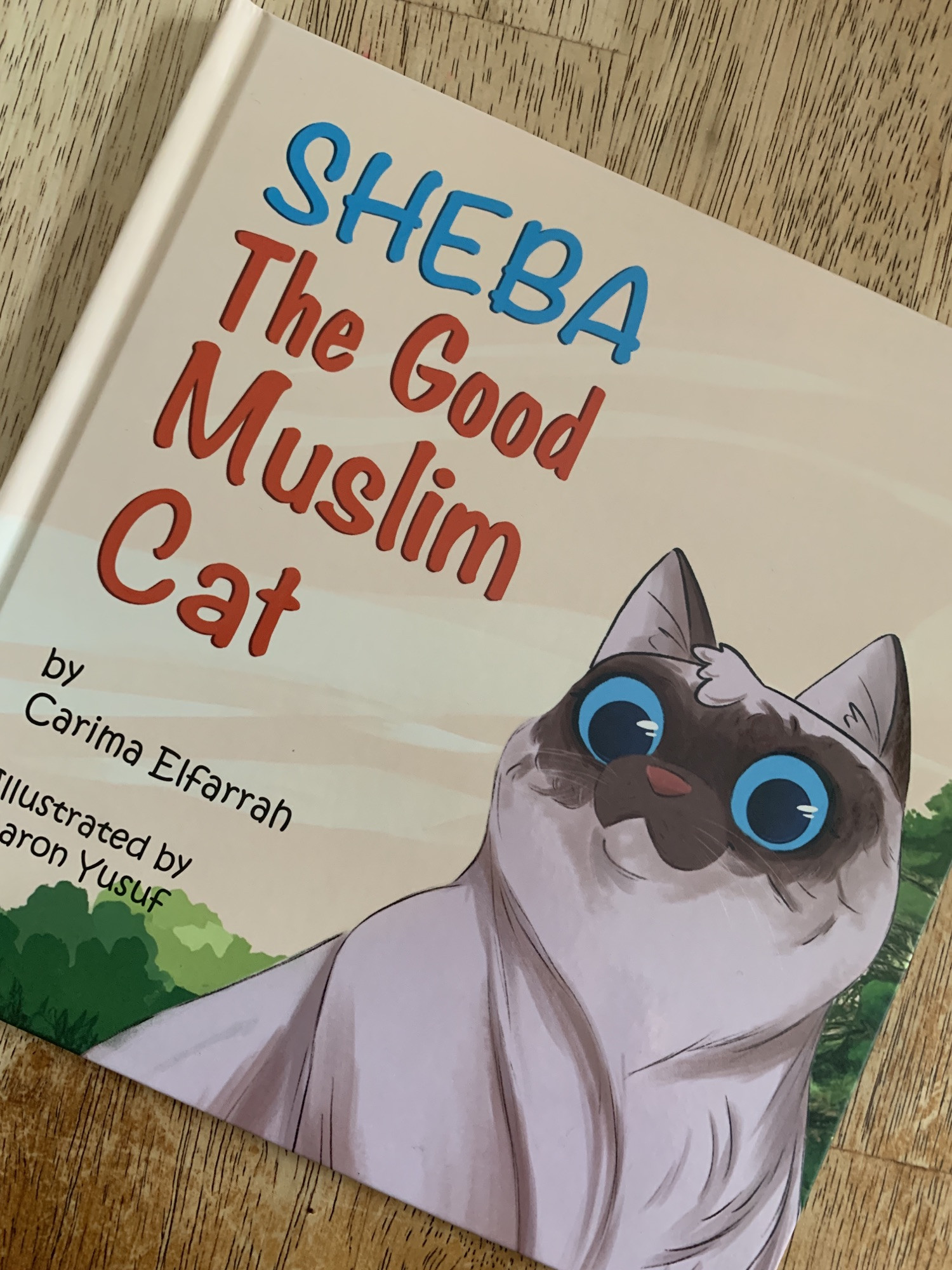 A slightly disappointed looking grey tabby cat with blue eyes, looking to the left of the frame, against a plain background, representing Sheba the Muslim Cat's subtle charm.
A slightly disappointed looking grey tabby cat with blue eyes, looking to the left of the frame, against a plain background, representing Sheba the Muslim Cat's subtle charm.
A Narrative Overview of Sheba’s Day
The book introduces Sheba, a sapphire-eyed cat belonging to a Muslim family. Through the eyes of a young boy, we learn why he believes Sheba is a “good Muslim cat.” These reasons include Sheba’s proximity to his father during Quran recitation, her attentiveness during prayer times (salah), her playful interactions with the ‘imam’ (father) post-prayer, and her patience when awaiting food and water. The narrative also highlights Sheba’s early morning cries, interpreted as waking the boy for Fajr prayer. The boy expresses hope that Sheba will testify to the family’s good deeds on the Day of Judgement, framing her actions within an Islamic context.
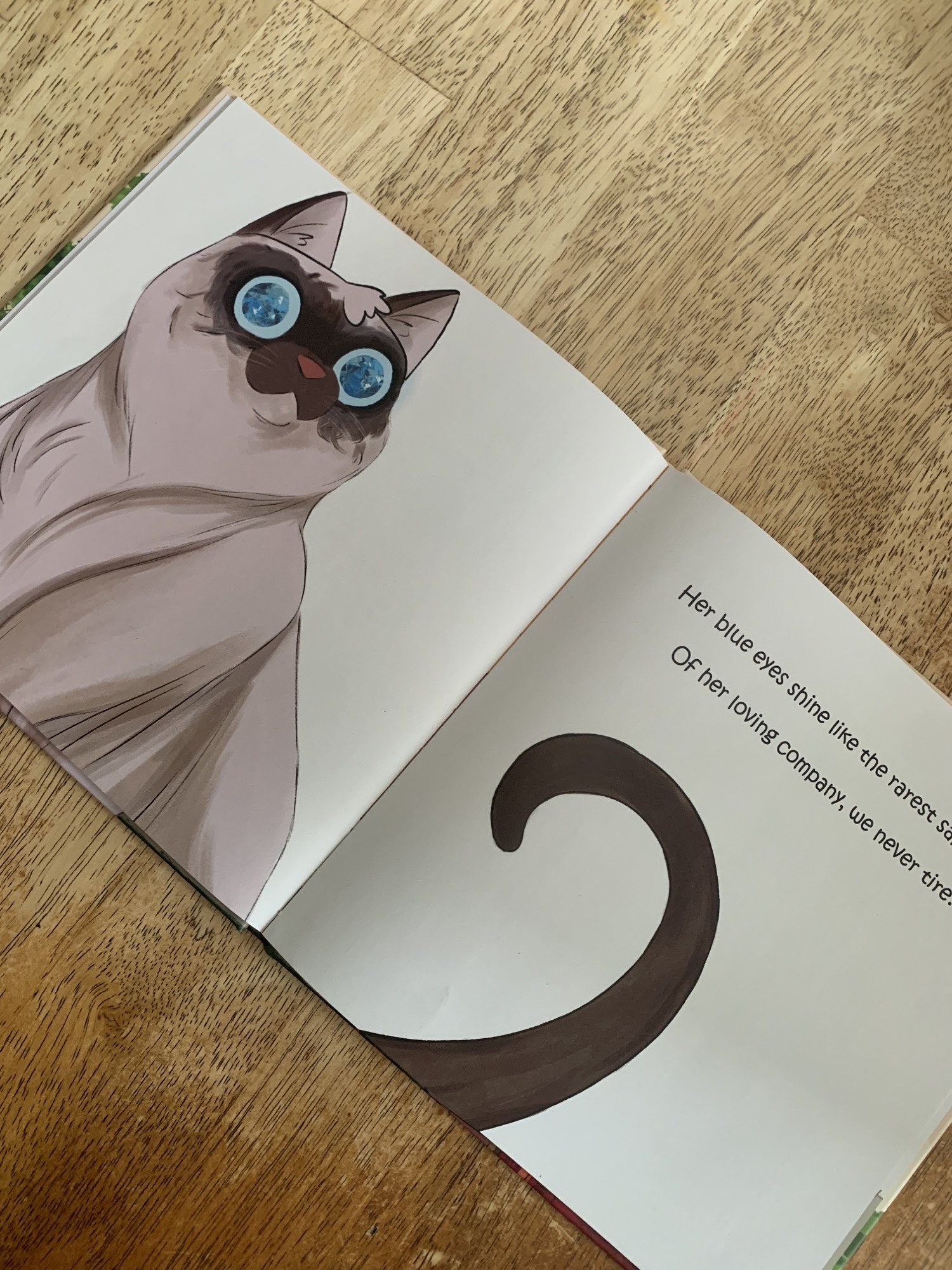 A page from the book showing a young boy in pajamas, kneeling to pet a grey cat with blue eyes, with prayer beads and a mat visible, depicting a Muslim family's morning routine with their cat.
A page from the book showing a young boy in pajamas, kneeling to pet a grey cat with blue eyes, with prayer beads and a mat visible, depicting a Muslim family's morning routine with their cat.
 Another page from the book showing the father reading the Quran, with the grey cat sitting beside him, illustrating the cat's presence during religious activities in a Muslim household.
Another page from the book showing the father reading the Quran, with the grey cat sitting beside him, illustrating the cat's presence during religious activities in a Muslim household.
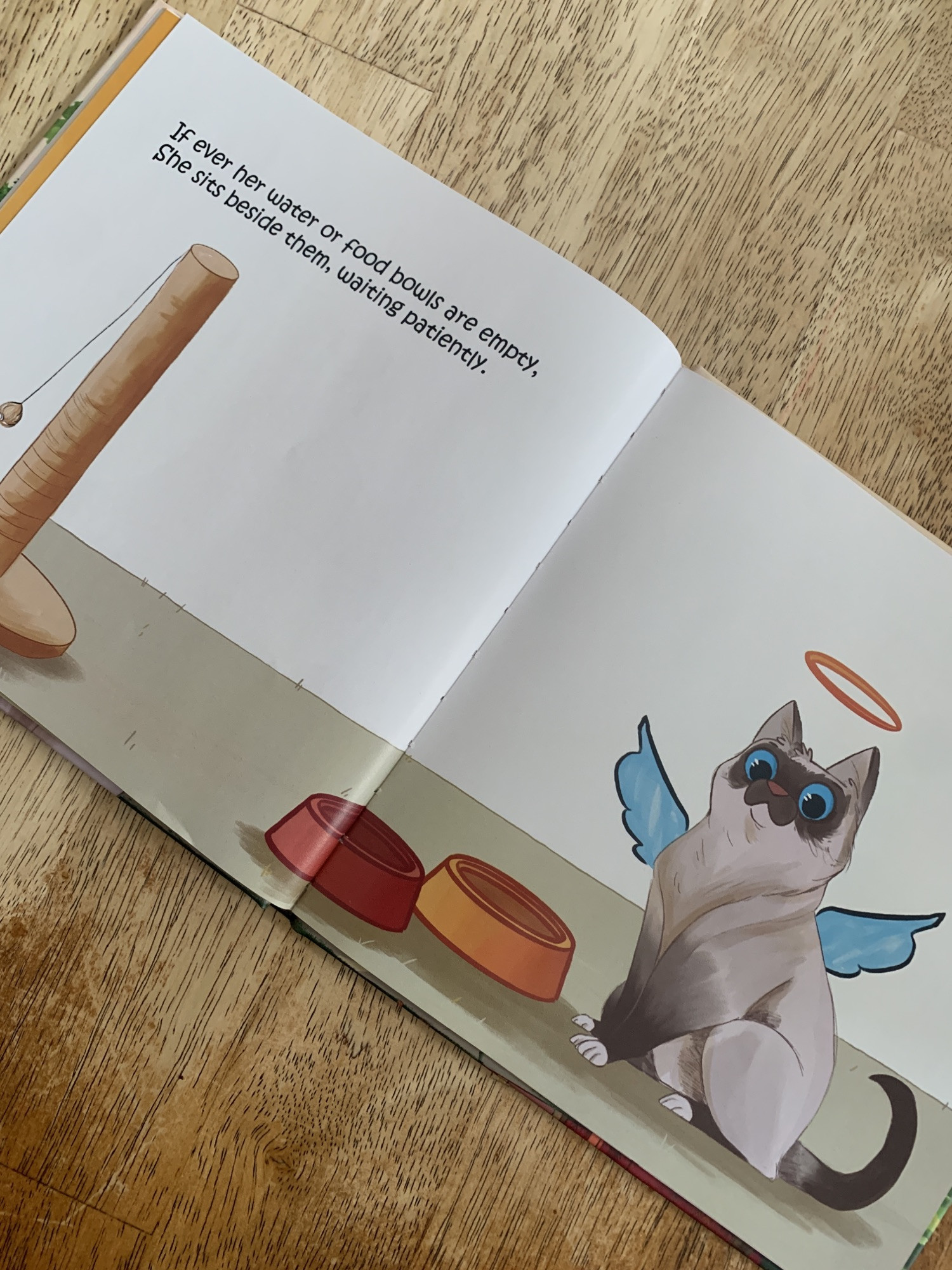 A page showing the family praying, with the grey cat nearby, suggesting the cat is a part of the Muslim family's life and observes their religious practices.
A page showing the family praying, with the grey cat nearby, suggesting the cat is a part of the Muslim family's life and observes their religious practices.
Critical Analysis: Where “Sheba” Falls Short
Despite the appealing concept of exploring a muslim cat in children’s literature, “Sheba: The Good Muslim Cat” suffers from several drawbacks that hinder its effectiveness and overall impact.
Rhyming Text and Simplistic Examples
The rhyming text, while common in children’s books, feels forced and doesn’t enhance the narrative. The examples used to portray Sheba as a “good Muslim cat” are quite basic – waiting for food, being present during prayers – and lack depth. While these are positive traits for any pet, attributing them specifically to a cat being “Muslim” feels tenuous and doesn’t fully explore the intended theme.
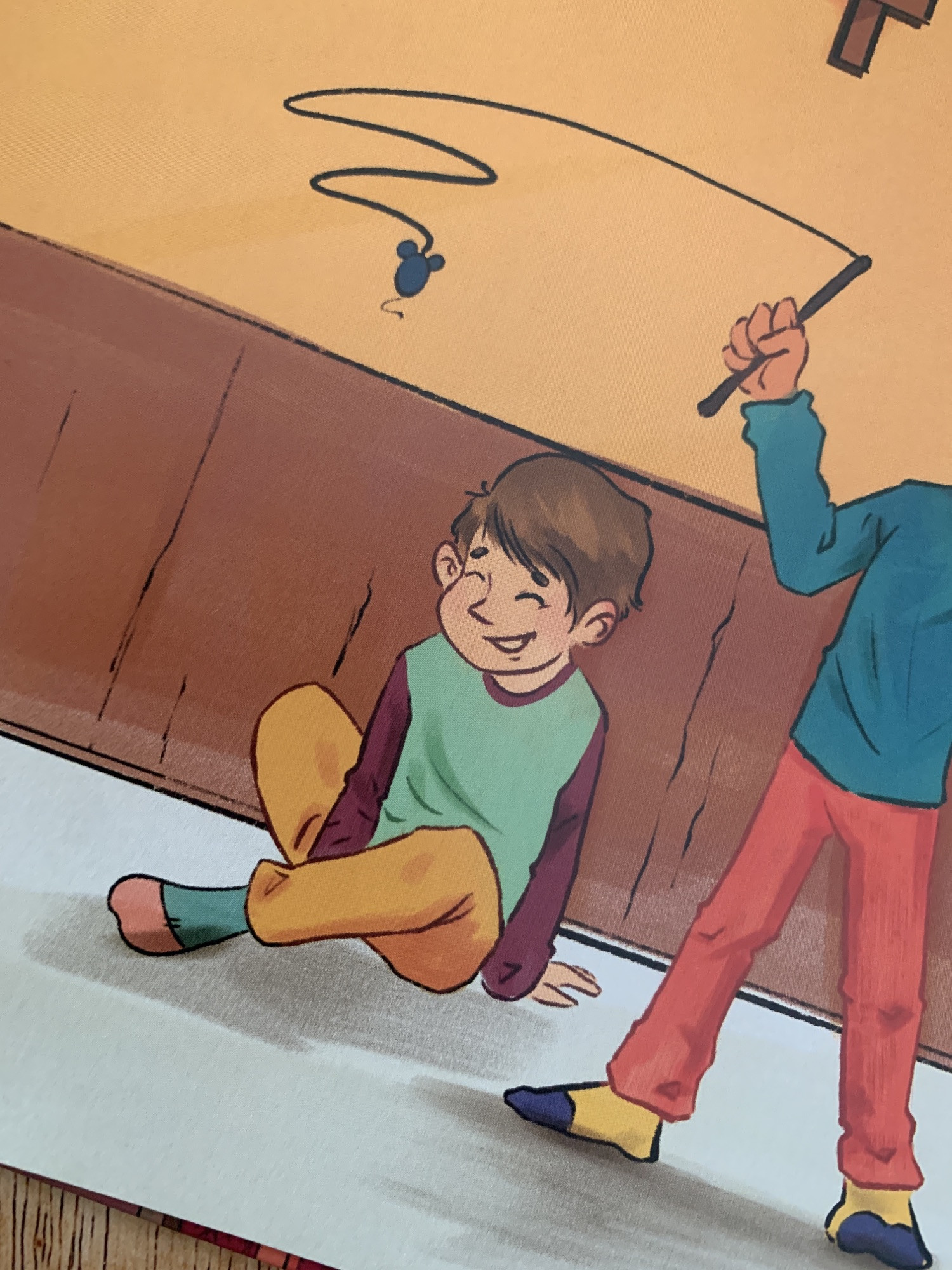 A page from the book showing a young boy standing with a grey cat, with text overlaid on the illustration, indicating rhyming text and the book's style.
A page from the book showing a young boy standing with a grey cat, with text overlaid on the illustration, indicating rhyming text and the book's style.
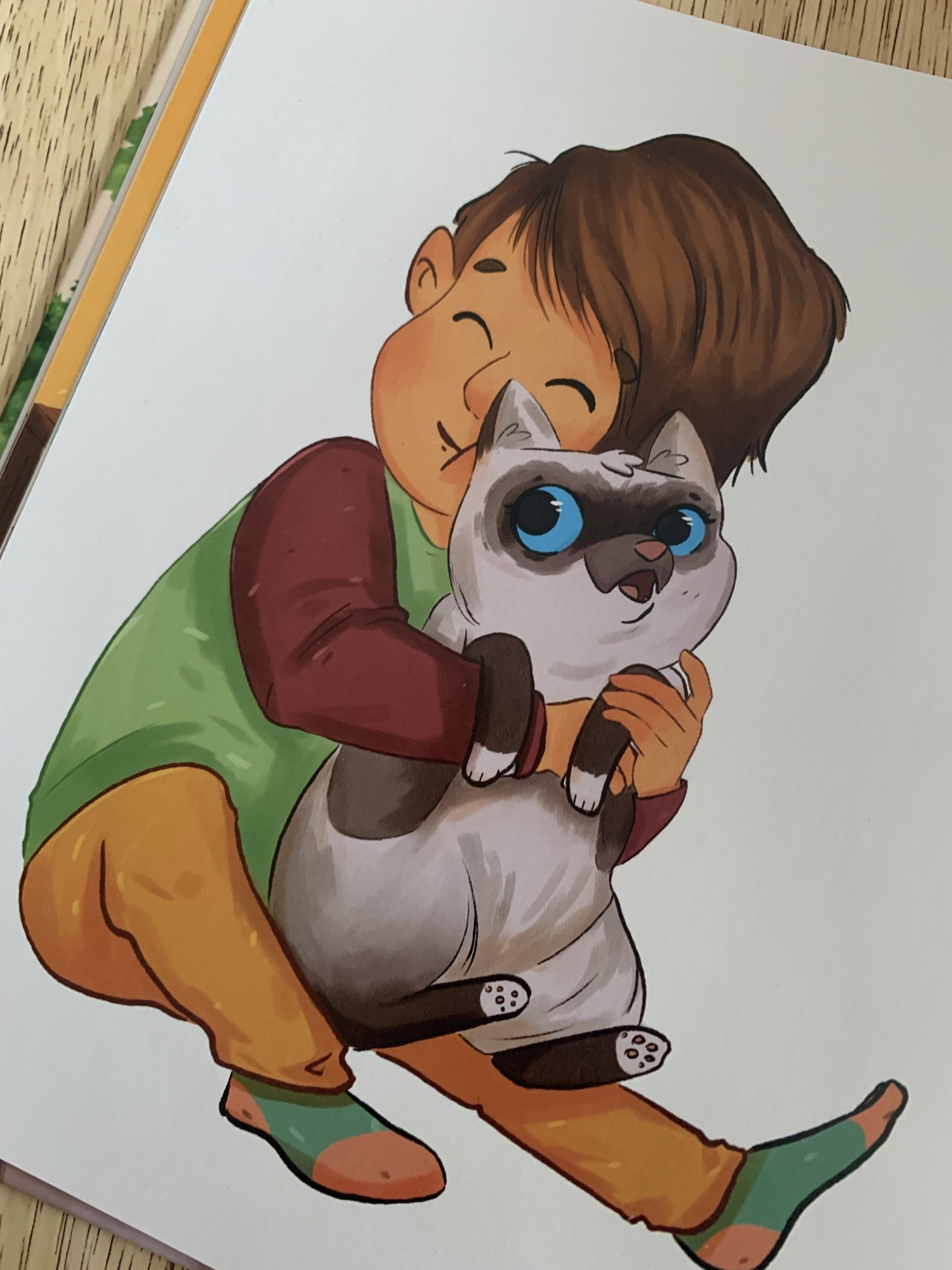 A page showing the young boy and his father with the cat, with text running over the image, demonstrating the text placement issue and potential readability problems.
A page showing the young boy and his father with the cat, with text running over the image, demonstrating the text placement issue and potential readability problems.
Questionable Angel Imagery
One of the most jarring aspects is the angel imagery associated with the cat. The depiction of a cat with a halo and wings introduces Christian symbolism that clashes with the intended Islamic theme. This visual choice is not only confusing but also misrepresents Islamic angel iconography, creating a sense of dissonance for Muslim readers.
Overly Ambitious and Incongruous Glossary
The book includes a glossary, seemingly aimed at explaining Islamic terms. However, this glossary is described as feeling “copy and pasted from Wikipedia for non-Muslim adults.” This suggests a lack of careful curation and appropriateness for the target audience of toddlers and preschoolers. The inclusion of a complex glossary in a simple picture book for young children is conceptually mismatched and detracts from the book’s core narrative.
Size and Readability Concerns
The small 8×8 inch size of the 32-page book makes it unsuitable for group story times. Furthermore, the text often runs over the illustrations, hindering readability and visual appeal. This design choice diminishes the overall user experience, especially for young readers still developing their literacy skills.
Misleading Title and Superficial Exploration of Theme
The title, “Sheba: The Good Muslim Cat,” sets an expectation that the book will delve into what it means for a cat to be “Muslim.” However, the book only scratches the surface. The cat’s “Muslim” identity is portrayed through passive observation of family rituals rather than any meaningful engagement with Islamic principles. The inclusion of a hadith at the end, while appreciated, is unsourced, reducing its credibility and educational value. Additionally, the inspiration drawn from the story of Sheikh Shukari, a scholar who supposedly conversed with a cat, feels anecdotal and somewhat far-fetched, weakening the book’s premise for critical readers.
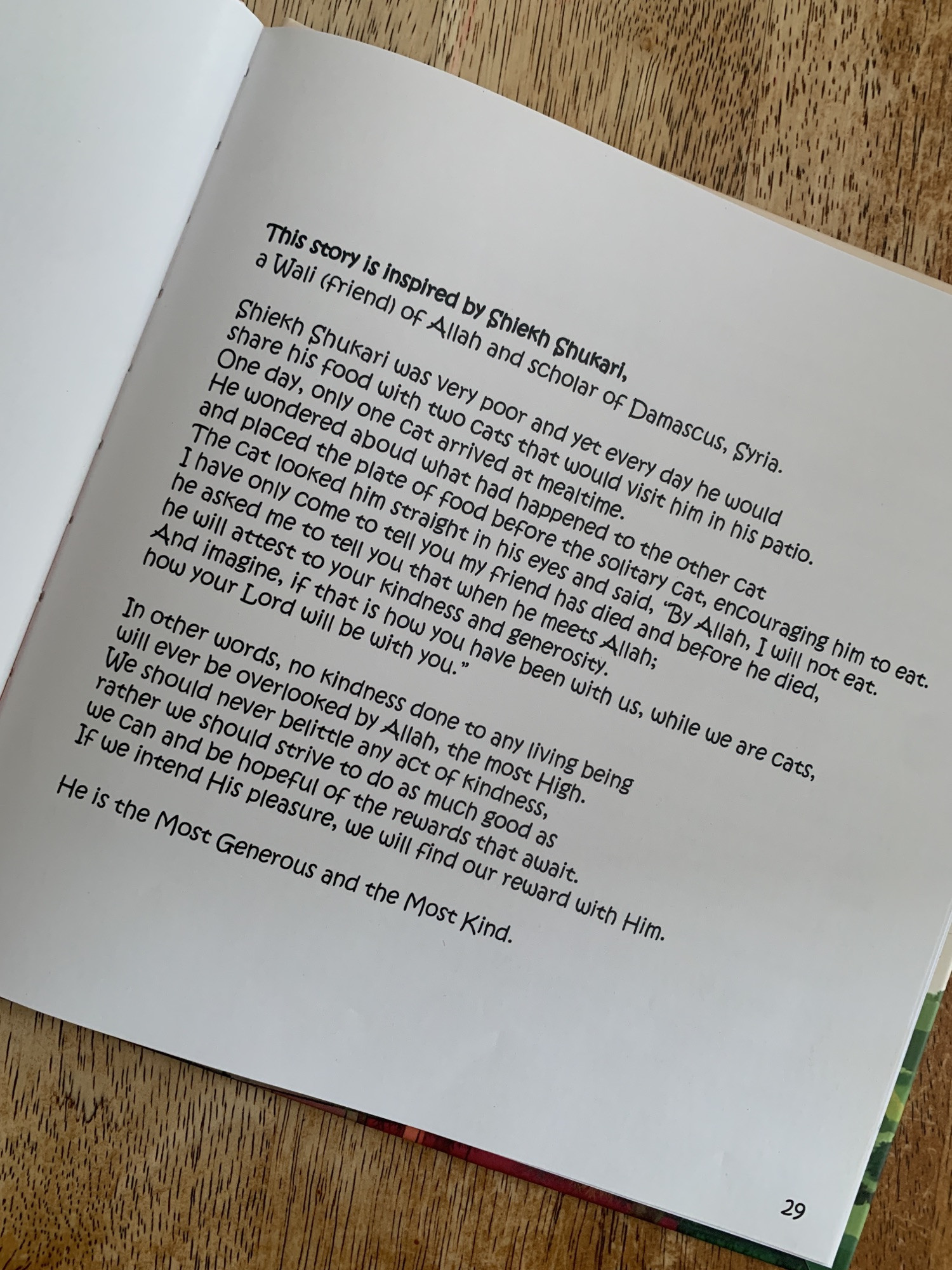 A page showing the back matter of the book, including text about Sheikh Shukari and a cat, indicating the inclusion of background stories and potentially the glossary.
A page showing the back matter of the book, including text about Sheikh Shukari and a cat, indicating the inclusion of background stories and potentially the glossary.
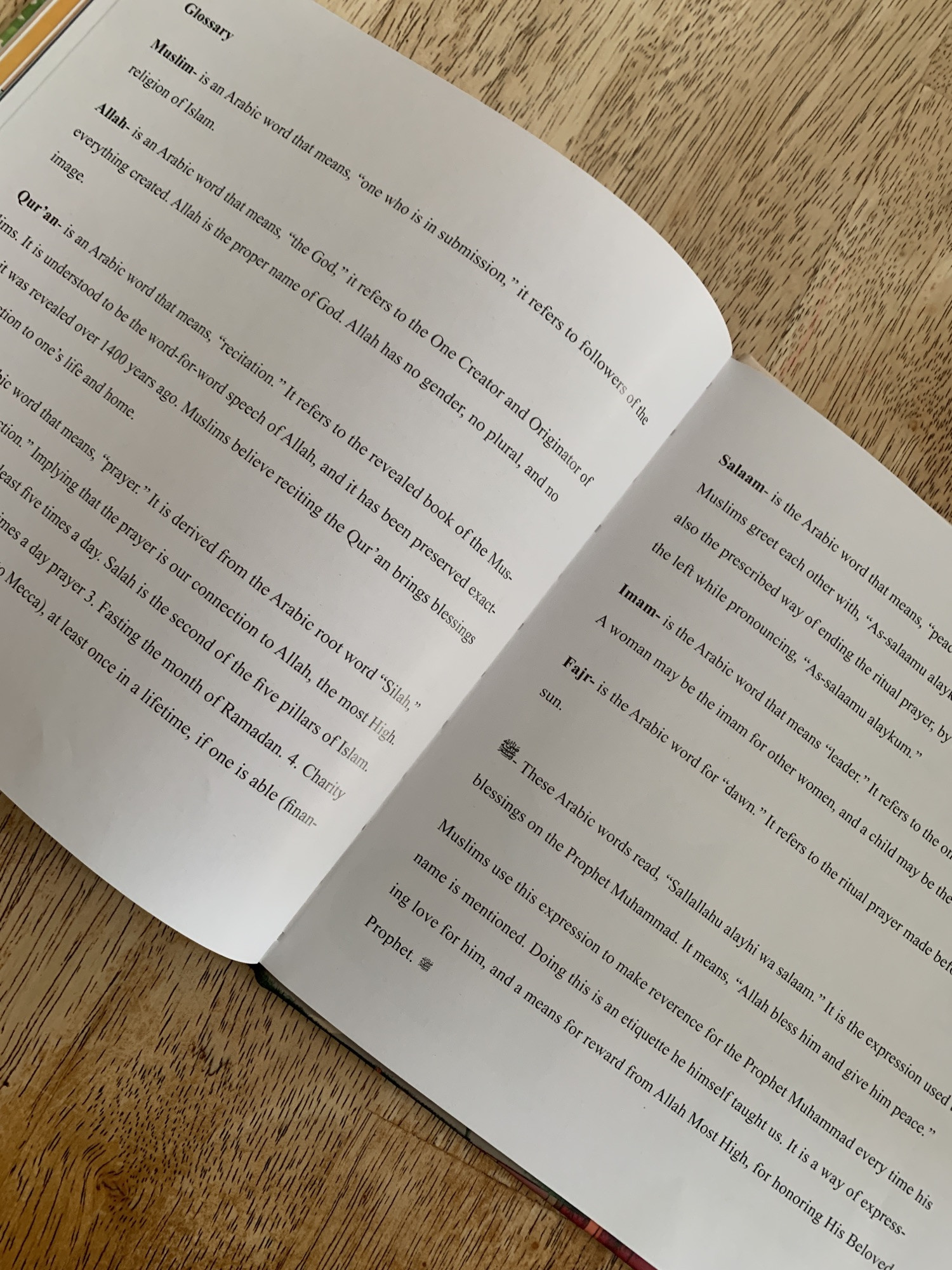 Another page likely from the back matter, possibly showing author and illustrator bios, or further supplementary information.
Another page likely from the back matter, possibly showing author and illustrator bios, or further supplementary information.
Limited Engagement from the Target Audience
Perhaps the most telling critique is the reviewer’s personal experience: while their toddler initially enjoyed the book, there was no repeated request to read it again, even after weeks. This lack of sustained engagement from the intended audience speaks volumes about the book’s lasting appeal and effectiveness.
Conclusion: A Missed Opportunity to Celebrate Muslim Cats
“Sheba: The Good Muslim Cat” presents an interesting concept but ultimately falls short in its execution. From confusing imagery and simplistic narrative to readability issues and an incongruous glossary, the book struggles to deliver a compelling or insightful story about a muslim cat. While the idea of highlighting feline companions within an Islamic context is commendable, this particular book requires significant improvements to truly resonate with its target audience and offer genuine value.
